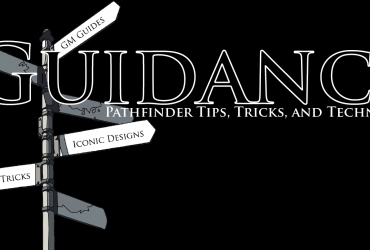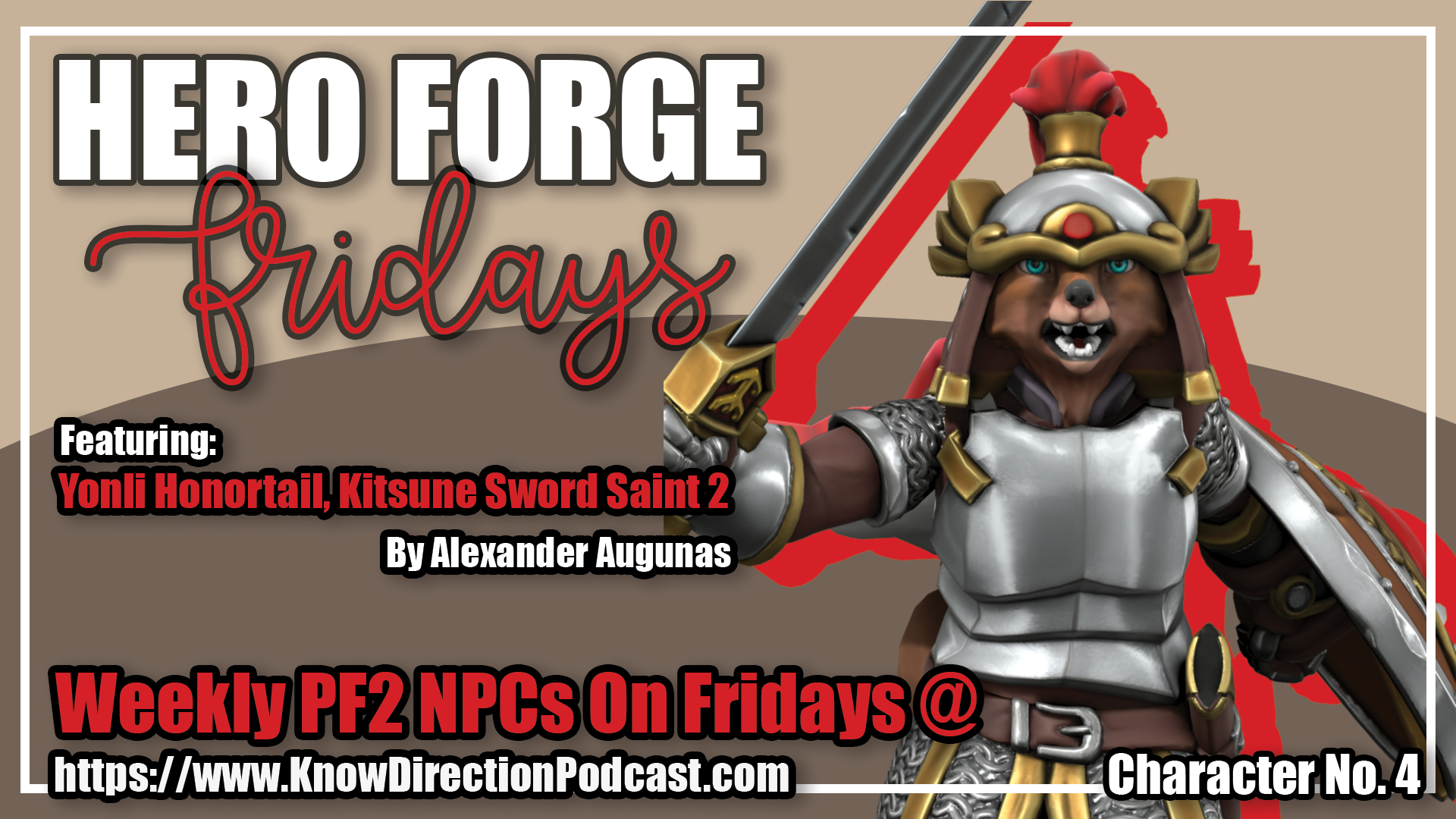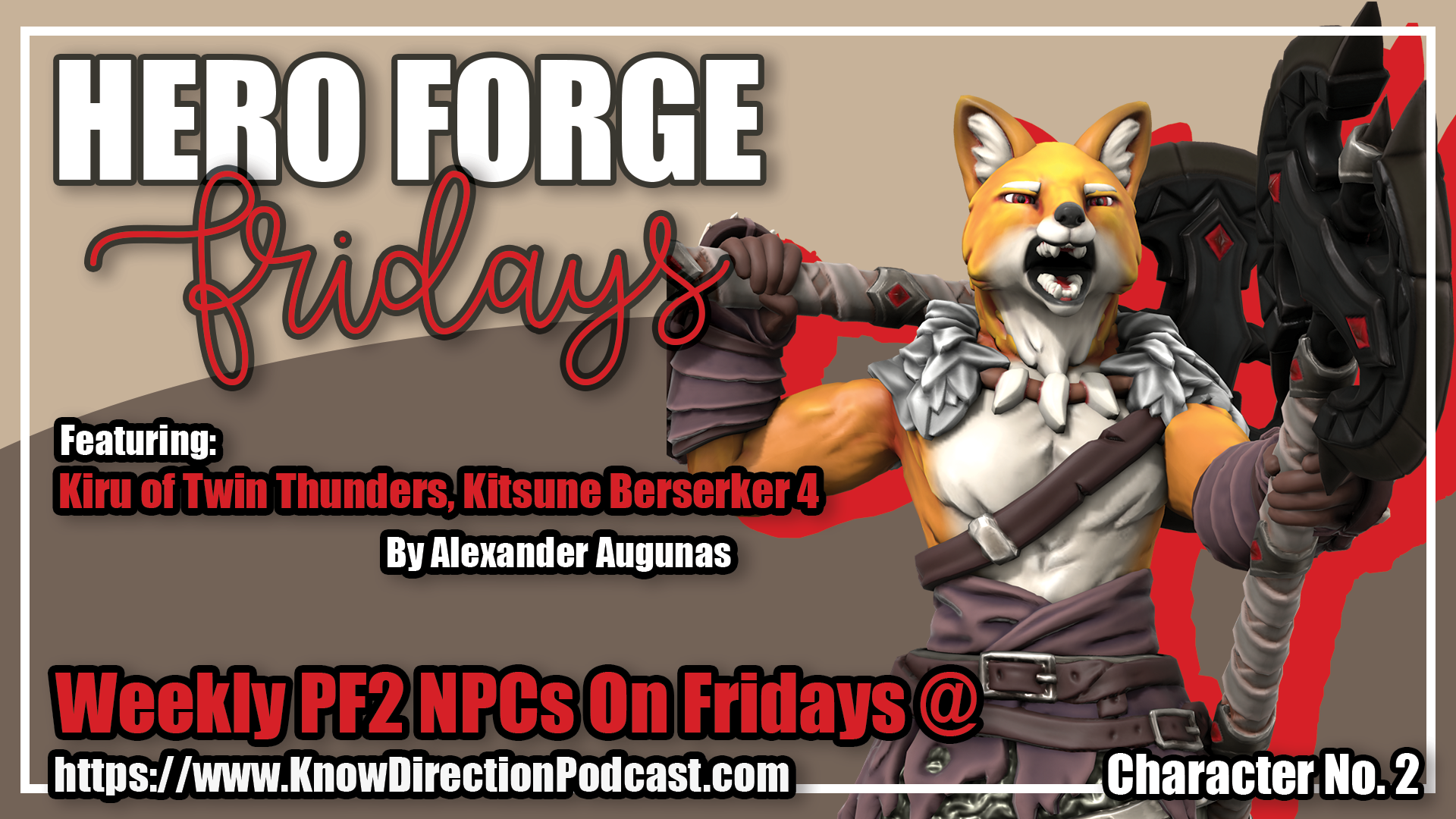 Welcome to Iconic Design, Private Sanctuary’s source for innovative and evocative character builds for the Pathfinder Roleplaying Game, written by Everyman Gamer Alexander Augunas. Today, we’re going to be looking at a build for Darkwing Duck.
Welcome to Iconic Design, Private Sanctuary’s source for innovative and evocative character builds for the Pathfinder Roleplaying Game, written by Everyman Gamer Alexander Augunas. Today, we’re going to be looking at a build for Darkwing Duck.
I am the Gamer who is Average! The designer who lurks in the PFS forums, listening for inspiration but often getting nothing but extraordinarily bigoted dribble! I am the Everyman Gamer, and today I’m building Darkwing Duck!
Build Concept
Here’s a quick rundown on how I’m going to be building Disney’s favorite mock superhero.
- Tengu: Its pretty amazing how duck-like tengu can be, eh? I’ll be picking up the claws alternate racial trait instead of swordtrained; not only does Darkwing Duck never use a sword (as far as I can remember, anyway), but the claws trait counts as having Improved Unarmed Strike for the purpose of qualifying for feats. Nice, but not sure I’m going to use it. In any case, Darkwing Duck is a master at a type of martial arts known as Quack-Fu, and I feel like Improved Unarmed Strike from this trait is PERFECT for that.
- Gunslinger: Darkwing Duck’s primary weapon is his gas gun, and I’ve decided that I’m going to model that with the dragon pistol. That way you can use bullets when you want, or blast them with fire. Which is burning gas. Close enough—blame the 90s and their vehement disdain for firearms.
- Vigilante: The ultimate Darkwing Duck class!
And with these pieces, let’s look at the build!
Early Levels (1–7)
- Classes: gunslinger 5, vigilante 2
- Feats: Gunsmithing (Bonus), Point-Blank Shot (1st), Ranged Feint (3rd), Rapid Reload (5th), Rapid Shot (Bonus), Deadly Aim (7th)
- Abilities: deeds, dual identity, grit, gun training +1, gunsmith, nimble +1, seamless guise, social talents, vigilante specialization (stalker; 1d4), vigilante talents
- Deeds: deadeye (1st), gunslinger’s dodge (1st), quick clear (1st), gunslinger initiative (3rd), pistol whip (3rd), utility shot (3rd)
- Social Talents: renown (1st)
- Vigilante Talents: cunning feint (2nd)
Alright, so let’s go over the basics. First level is gunslinger—you need it for all your tricks. Second two levels are vigilante, because you can’t progress five levels without a dual identity and call yourself Darkwing Duck. (Also, picking up canny feint early on is REALLY nice.) To go with Canny Feint, we’re taking the Ranged Feint feat at Level 3. It means pushing back Precise Shot and Rapid Shot a few levels, but you get a bonus feat at 3rd level and its worth it for the antics.
Basically, as a feinting gunslinger you will NEVER miss. Ever. You’re already targeting touch AC, and with feinting at your disposal your target won’t get their Dex bonus either. You’re either giving up moving or one attack of a bunch in order to do this, and its almost ALWAYS worth it. Because the gunslinger’s game is taking advantage of trading penalties for damage, and with this combo you can make it work against ANYONE AND get a weakened version of sneak attack against your target for doing so. (+1d4 damage now, but abound to go up a lot in the mid levels.)
Like most gunslinger builds, the base class isn’t very relevant after 5th level, when you get Dex to damage with your guns, so plan on more vigilante levels as we progress forward.
Mid Levels (8 –14)
- Classes: gunslinger 5, vigilante 9
- Feats: Gunsmithing (Bonus), Point-Blank Shot (1st), Ranged Feint (3rd), Rapid Reload (5th), Rapid Shot (Bonus), Deadly Aim (7th), Clustered Shots (9th), Weapon Focus: pistol (11th), Snap Shot (13th)
- Abilities: deeds, dual identity, grit, gun training +1, gunsmith, nimble +1, seamless guise, social talents, startling appearance, unshakable, vigilante specialization (stalker; 5d4), vigilante talents
- Deeds: deadeye (1st), gunslinger’s dodge (1st), quick clear (1st), gunslinger initiative (3rd), pistol whip (3rd), utility shot (3rd)
- Social Talents: renown (1st), loyal aid (3rd), well-known expert (5th), quick change (7th), safe house (9th)
- Vigilante Talents: cunning feint (2nd), surprise strike (4th), sniper (6th), stalker sense (8th)
As Darkwing Duck continues to advance into the mid levels, he gains many of the standard gunslinger tricks—Clustered Shots for overcoming DR, Weapon Focus for more hits, and Snap Shot for making attacks of opportunity against those foolish enough to approach him. As for his vigilante abilities, I took surprise strike for even crazier bonuses to hit against foes he can sneak attack, as well as sniper, which removes the distance limitation on from how far Darkwing Duck can use hidden strike against a foe. For social talents, I took loyal aid to represent his niece and pilot, well-known expert because Darkwing is something of a braggart, quick change because pretty much every modern super hero has this, and safe house to represent his sanctuary.
Overall, Darkwing Duck is actually starting to come together at this stage. He has a BAB of +9, so his Deadly Aim is at –4 / +8 for attack and damage. When he feints, he goes against flat-footed touch and gets an extra +2 to hit and +5d4 to damage (5d8 if his foe is unaware of his presence). His damage is pooled for the purpose of DR and hardness, and he has his Dexterity to damage. He also has a good array of social face-type skills, and is likely going to be VERY good at Bluff. Overall, a fun if less-than-optimized build.
Let’s check out the high levels.
Endgame (15+)
- Classes: gunslinger 5, vigilante 15
- Feats: Gunsmithing (Bonus), Point-Blank Shot (1st), Ranged Feint (3rd), Rapid Reload (5th), Rapid Shot (Bonus), Deadly Aim (7th), Clustered Shots (9th), Weapon Focus: pistol (11th), Snap Shot (13th), Vital Strike (Bonus), Combat Reflexes (15th), Improved Snap Shot (17th), Improved Vital Strike (19th)
- Abilities: deeds, dual identity, frightening appearance, grit, gun training +1, gunsmith, nimble +1, seamless guise, social talents, startling appearance, unshakable, vigilante specialization (stalker; 8d4), vigilante talents
- Deeds: deadeye (1st), gunslinger’s dodge (1st), quick clear (1st), gunslinger initiative (3rd), pistol whip (3rd), utility shot (3rd)
- Social Talents: renown (1st), loyal aid (3rd), well-known expert (5th), quick change (7th), safe house (9th), great renown (11th), immediate change (13th), incredible renown (15th)
- Vigilante Talents: cunning feint (2nd), surprise strike (4th), sniper (6th), stalker sense (8th), Vital Punishment (10th), leave an opening (12th), rogue talent: bleeding attack (14th)
So, let’s look at the end game here. The big build-into is the Snap Shot feat, which we take advantage of using Combat Reflexes, the Vital Punishment vigilante talent (which not only gives you Vital Strike, but lets you use it on attacks of opportunity), and the leave an opening talent. As written, you’d “threaten” someone with your gun via Snap Shot, so the feat works. (And combos nicely with Vital Punishment.)
By the end game, you’re looking at roughly 1d8 + Dex + enhancement + 10 (Deadly Aim) + 8d4 (from hidden strike, or 8d8 if the target is unaware), plus 8 points of bleed damage from bleeding attack every round. Considering this build gets you to the coveted +16 BAB at level 20, you’ve got a total of 5 attacks per round (four iterative plus Rapid Shot), and giving up one to ensure that all of the others are hidden strikes is an EASY choice.
This isn’t the most optimized gunslinger build in the game, but it’s a fun, quirky little build for representing a fun, quirkly little cartoon character.
Alexander “Alex” Augunas has been playing roleplaying games since 2007, which isn’t nearly as long as 90% of his colleagues. Alexander is an active freelancer for the Pathfinder Roleplaying Game and is best known as the author of the Pact Magic Unbound series by Radiance House. Alex is the owner of Everyman Gaming, LLC and is often stylized as the Everyman Gamer in honor of Guidance’s original home. Alex also cohosts the Private Sanctuary Podcast, along with fellow blogger Anthony Li, and you can follow their exploits on Facebook in the 3.5 Private Sanctuary Group, or on Alex’s Twitter, @AlJAug.







The extra damage from Deadly Aim cannot be applied to touch attacks.
You are correct, but your statement is irrelevant because of the following statement from the the Mastering Combat section, under Range and Penetration:
“Early Firearms: When firing an early firearm, the attack resolves against the target’s touch AC when the target is within the first range increment of the weapon, but this type of attack is not considered a touch attack for the purposes of feats and abilities such as Deadly Aim.”
If you are referring to using the “gas” aka the scatter weapon property, then that is still irrelevant:
Scatter Weapon Quality: A weapon with the scatter weapon quality can shoot two different types of ammunition. It can fire normal bullets that target one creature, or it can make a scattering shot, attacking all creatures within a cone. Cannons with the scatter weapon quality only fire grapeshot, unless their descriptions state otherwise. When a scatter weapon attacks all creatures within a cone, it makes a separate attack roll against each creature within the cone. Each attack roll takes a –2 penalty, and its attack damage cannot be modified by precision damage or damage-increasing feats such as Vital Strike. Effects that grant concealment, such as fog or smoke, or the blur, invisibility, or mirror image spells, do not foil a scatter attack. If any of the attack rolls threaten a critical, confirm the critical for that attack roll alone. A firearm that makes a scatter shot misfires only if all of the attack rolls made misfire. If a scatter weapon explodes on a misfire, it deals triple its damage to all creatures within the misfire radius.
I’m curious why you didn’t just go straight Vigilante with the Gunmaster archetype?
Because gunmaster doesn’t get gun training. It is VERY difficult to play an effective gun-based character without the massive bonus that adding Dex to damage with the gun provides.
Also, because quick clear 1/day isn’t as good as quick clear Wis/day, even if the vigilante talent removes it from the “grit pool.”
Thanks for the educational response.